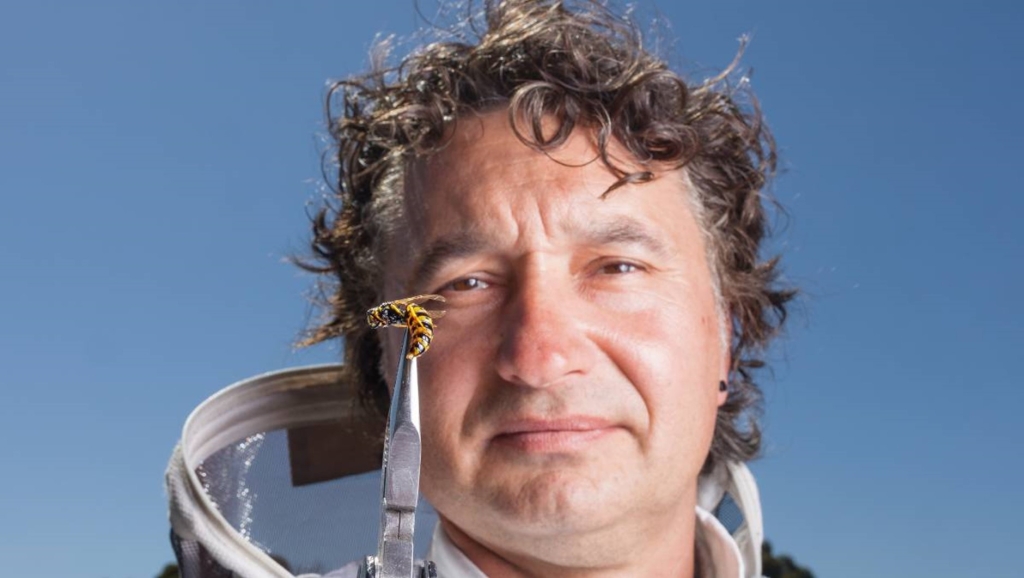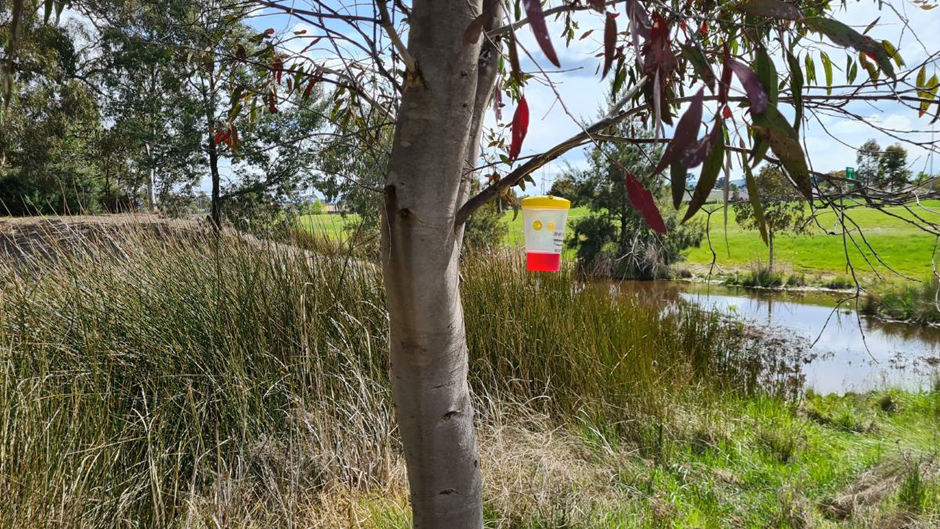CoreEnviro Solutions scheme keeps European wasps away from Canberra
By Steve Evans – Canberra times
10 February 2023

Jim Bariesheff with one of the deceased queen wasps. Picture by Sitthixay Ditthavong
An innovative scheme has kept Canberra free of swarms of nasty European wasps this summer.
The trick has been to lure the queen wasps into a sort of lobster pot. Once they’ve gone through the one-way entrance, they are doomed – and that means they haven’t been able to breed and create hives of thousands of other wasps.
By this time of year, there have usually been more than 50 “stinging incidents” (to give them the official term).
But this year, there have only been seven such incidents, though one of them was when a woman was stung nine times on the arm after she stuck her hoe into a wasp nest.
Wasp expert Jim Bariesheff said 50 wasp nests had been reported on the ACT hotline this year.
“Usually, we would have had 200 to 300 reported.”
Part of the reason is the dismal cold weather but a big part – perhaps a bigger part – is the new scheme, according to Mr Bariesheff who works for CoreEnviro Solutions which the ACT government contracts to combat wasps.
“Once the queens come out of hibernation, they are after a carbohydrate food source. They’ve been in hibernation for three or four months so they are hungry,” Mr Bariesheff said.
So he and his colleagues from the ACT government put down 150 special traps, laden with enticing carbs.
In the queens went – and down the breeding of new wasps came.
In fact, 1,551 queen wasps met their doom – Mr Bariesheff has kept them in a jar. He calculates that each queen would have generated 4000 wasps.
“If all those queens went off to make a nest, you would have more than six million wasps in the Canberra environment.”
Their absence is good for the Canberra environment because of a complex but wonderful mechanism: wasp larvae (the youngest, pre-adult form) live on spiders and all kinds of grubs.
“Wasps consume a huge number of insects,” according to Daniel Patterson, the ACT’s Invasive Pests and Weeds officer.
The insects consumed by the European wasps (which came to Australia with the colonists) are also food for native species, particularly spiders.
“Spiders are our natural pest-control service,” Mr Patterson said.
So eWasp (as they’re known in the trade) deprive native Australian spiders of food. And spiders, remember, are good.
“A mature eWasp nest can have 4000 wasps. All these workers are out all day and every day. The impact is quite staggering.
“Our native lizards – some of which are endangered – also prey on insects.”
On top of that, European wasps sponge off bees.
“They rob honey bees. They rob the honey from the hives.”
Mr Patterson thinks the big advantage of the new wasp-control system is that it doesn’t rely on chemicals.
“If this program wasn’t in place, all of those queens would produce nests and that would mean a lot of pesticide we would have to use.”
The innovative scheme is bad for the queens, then, and for the population of the European wasp in Canberra.
But it’s good for insects and so for the native animals which feed on those insects.

CoreEnviro Solutions spring queen trap
And it’s good for people who like wasp-free barbecues. “We are so pleased with the result,” Mr Patterson said. “We are so happy.”
Queen wasps were not available for comment.


